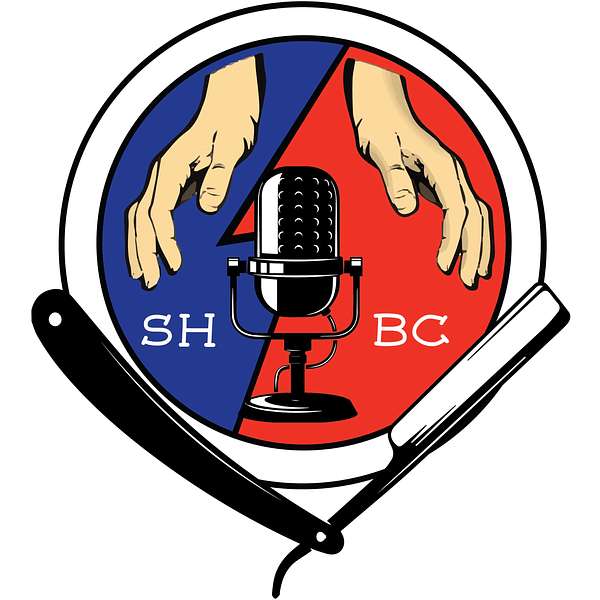
Steady Hands Barber Club
Steady Hands Barber Club
The Dandruff Episode
Today on the Steady Hands Barber Club, we are talking about Seborrheic Dermatitis: Medical term for dandruff. A common skin condition that mainly affects your scalp. It causes scaly patches, red skin and stubborn dandruff. Seborrheic dermatitis can also affect oily areas of the body, such as the face, sides of the nose, eyebrows, ears, eyelids and chest.
Symptoms: Skin flakes on your scalp, hair, eyebrows, beard or mustache. Patches of greasy skin covered with flaky white or yellow scales or crust on the scalp, face, sides of the nose, eyebrows, ears, eyelids, chest, armpits, groin area or under the breastsRed skin/Itching Causes: While doctors don't know the exact cause, they do know that it is not a hygiene issue. So relax. Malassezia: Everyone has it! It is part of the normal human microbiome. It is a type of fungus or bacteria that tends to grow in oily areas with lots of sebaceous glands, including your scalp and face. The fungus helps break down sebum, which is oil produced by your sebaceous glands. This process leaves behind oleic acid, which irritates some people’s skin. In addition, if you have naturally oily skin, you likely also have more Malassezia microbes, leading to more oleic acid. Getting Rid of Dandruff: Exfoliating Exfoliation is a process that helps remove dead skin cells, including those that cause dandruff. Look for a beard brush that has soft bristles. In addition to getting rid of dead skin, a beard brush will also help distribute oils from your skin. Before cleaning your beard, gently massage the skin under your beard with the brush. Make sure you’re not scrubbing your beard too hard. That can make dandruff worse Washing If you don’t already, wash your hair regularly. You can use the same shampoo you use on your scalp for your beard as well. Look for these dandruff-fighting ingredients in a shampoo: Zinc pyrithione This is an anti-fungal as well as an ingredient that targets dead skin cells. It is gentle enough for everyday use, but it needs to be used more often until the dandruff is under control. Zinc pyrithione does not decrease sebum emission like ketoconazole does, but it is an effective over-the-counter solution. Coal Tar Shampoos that use coal tar as an active ingredient are aimed at ‘thick crust’ problems, addressing dandruff as well as psoriasis and eczema. Coal tar works by slowing the production of skin cells, reducing redness, inflammation, and irritation. It is very effective, but make sure to rinse thoroughly; the treated scalp area can be sensitive to sunlight. Coal tar also helps to relieve itching. Selenium Sulfide Shampoos with selenium sulfide target the yeast on scalps that can result in dandruff. This active ingredient can slow down cell turnover, but it can also discolor light-colored hair (or chemically treated hair). It is available in both prescription and over-the-counter strengths. Salicylic Acid This is an active ingredient whose main function is to remove scales and scalp build up. It works as a keratolytic, which is a fancy way of saying that it loosens the proteins that form the structure of skin. Moisturizing When you think about moisturizing, lotion probably comes to mind. However, it can be hard to apply to your beard without leaving a bunch of residue. Instead, opt for a beard oil. Rub a few drops of oil between your hands and massage it into the skin under your beard, working it through to the ends of your beard. To avoid more buildup, start with one or two drops. You can always add more if it feels like you didn’t reach your whole beard.
The bottom line. Dandruff is a common problem, but it’s easy to treat with the help of a simple routine. Whatever you decide to do, make sure you pay attention to both the hair of your beard and the skin underneath.